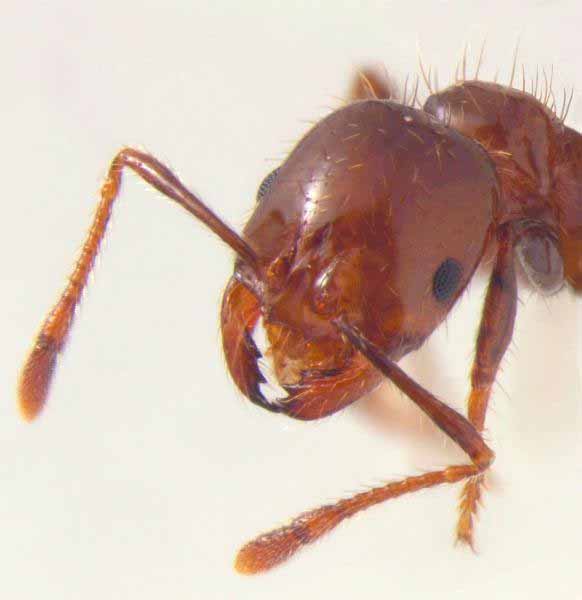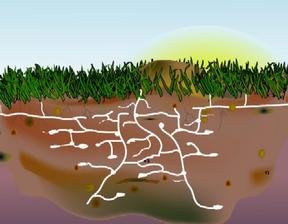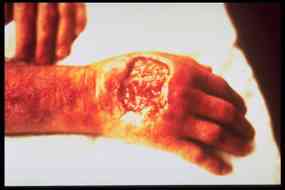| To date, 160 species in 37 genera and 9 subfamilies have been found in Alabama. This number should be considered preliminary because many habitats in the state have not yet been sampled. Sixteen species are considered to be exotic to Alabama, but only the imported fire ants, Solenopsis invicta Buren, S. richteri Forel, and their hybrid, and the Argentine ant, Linepithema humile (Mayr), have impacted the state and its ant fauna in a noticeable way. Although these ants are exceedingly common throughout the state, they thrive in disturbed open habitats, and therefore, natural habitats, especially forested ones, seem to be less affected by their presence. Five other introduced species, Brachymyrmex musculus Forel, Odontomachus ruginodis M.R. Smith, Cyphomyrmex rimosus (Spinola), Pheidole moerens Wheeler, and P. obscurithorax Naves, are now well established and common in southern portions of the state. Forested habitats include a diversity of species with Aphaenogaster, Camponotus, Pheidole, and Pyramica being the most diverse genera in the state. Similar to the fauna of other southeastern states, Pyramica is the most diverse genus in the state with 18 species found to date.
IDENTIFICATION
Ants belong to the insect order Hymenoptera and are close relatives of bees and wasps. They are familiar insects that are easily recognized, especially in their common wingless adult forms, known as workers. However, winged forms of ants, which leave the nest in large numbers in warm weather to mate and establish new colonies, are often mistaken for winged termites, which also leave their nests to mate. Ants and termites can be distinguished by three main characteristics:
- The ant’s body is constricted, giving it the appearance of having a thin waist; the termite’s body is not constricted.
- The ant’s hind wings are smaller than its front wings; the termite’s front and hind wings are about the same size. (Shortly after their flights, both ants and termites lose their wings, so wings may not always be present.)
- Winged female and worker ants have elbowed antennae; the termite’s antennae are not elbowed.
Ants undergo complete metamorphosis, passing through egg, larval, pupal, and adult stages. Larvae are immobile and wormlike and do not resemble adults. Ants, like many other hymenopterans, are social insects with duties divided among different types, or castes, of adult individuals. Queens conduct the reproductive functions of a colony and are larger than other ants; they lay eggs and sometimes participate in the feeding and grooming of larvae. Female workers, who are sterile, gather food, feed and care for the larvae, build tunnels, and defend the colony; these workers make up the bulk of the colony. Males do not participate in colony activities; their sole purpose is to mate with the queens. Few in number, males are fed and cared for by workers.
 |
FIRE ANTS |
Where fire ants come from?
Pest fire ants, the black and the red imported fire ant, are native to central South America and were introduced into the continental U.S. through the port of Moblie; the black, around 1918, the red around 1930. Presently, the black imported fire ant is found only in northeast Mississippi and northwest Alabama. The red imported fire ant is found primarily in the southeastern quarter of the continental US. Red imported fires ants are the primary pests. There are several native fire ant species.
How do they spread?
Imported fire ants spread (1) through transport of sod or nursery stock that is infested with mated queens or colonies (this is hwy nursery stock and sod sold outside the fire ant area must be certified as fire ant-free); (2) queens mated in the air fly, are blown or are transported when they land on vehicles, into new area; (3) flooded colonies form rafts that flow to new areas.
What limits the spread of imported fire ants?
Cold temperatures still limit the spread of imported fire ants to more northern areas. The quarantine (certification of plant material shipped outside the fire ant zone) also slows the spread.
How does a fire ant colony begin?
Colonies are established by mated queens after a mating flight. Older colonies produce winged reproductive forms (males, and females or "queens"). Most mating flights occur in the spring after rains on warm days. Mating occurs in the air, and mated queens land, lose their wings days. Mating occurs in the air, and mated queens land, lose their wings and seek a place to hide (90% or more queens are preyed upon by frogs, lizards, other ants including fire ant workers already in the area, etc.). They dig shallow depressions, and lay a few eggs from which workers (all sterile females) hatch. These workers care for the queen, egg production increases, and thus they colony begins. In some areas, 'multi-queen" colonies have been discovered in which there are more than one egg-producing queen per colony. In these cases, all queens must be eliminated in order for the colony to die. As long as a queen and a few workers survive the colony will live.
What is the difference between singlequeen and multiplequeen forms of the red imported fire ant?
- Singlequeen (monogyne form): only one queen per colony or mound; slightly larger workers; members of colonies are territorial; mound densities usually 2080 mounds per acre; fewer ants per acre.
- Multiplequeen (polygyne form): dozens of queens per colony; smaller average worker ants; colonies are interconnected; mound densities 100 to 1,000+ per acre; more ants per acre.
How long do fire ants live?
How long worker ants live depends on their size. The smallest workers live a month or two; medium-sized workers live two or three months; the largest workers may live three to six months. Queens live in nature two to six years. Males don't live long after they mate and fall to the ground.
What do fire ants eat?
Almost anything; but fire ants feed primarily on other insects. Workers sting other insects and then tear them into manageable pieces which they take back into the colony. Fire ants are attracted to the oils in insects, worms and seeds. This is why oils are used as attractants and insecticide solvents in fire ant baits. Although fire ant workers can chew, they can only swallow liquids. Solid foods that are brought back into the colony are digested by they fourth stage larvae (immatures) and fed back (fire ants feed each other) to other members of the colony. Chemical messengers (pheromones) are mixed with the food as it is passed around, especially by the queen.
| Why do mounds relocate? |
 |
Disturbing mounds (mowing, etc.) may cause mound and/or colony relocation. "Over-dosing" with insecticides may cause relocation (most insecticides at high doses may act as repellents). It is believed that disturbing the mound before treatment can cause relocation. Sometimes fire ants just move.
How deep do colonies go into the ground?
That depends on the age and size of the colony, soil texture, and how far down the water table is located. Mounds are not necessary for colony survival as long as there is a dark, moist area for protection of the queen. These types of colonies are sometimes found in walls and other parts of structures.
How can I tell the difference between fire ants and termites?
Although most ants are recognizable, some forms of winged ants are often confused with termites, especially during the termite swarming season. The front pair of wings on ants are larger than the hind pair, while the four wings of termites are approximately the same size. Ants have "elbowed" antennae and a "thin waist," being narrow between the thorax and hind abdominal segments. Termites have the thorax and abdomen broadly connected and their antennae are straight and hairlike.
Why do fire ants appear to sting at the same time?
Fire ants are sensitive to vibration or movement and tend to sting when the object they are on moves. The ants swarm up a person's leg and when one ant stings that person jerks or moves. This triggers many of the other ants to sting in response. Thus, it appears they all sting at the same time, and most do.
Is their sting lethal?
Only to a very small portion of the population who experience severe allergic reactions.
 |
Example of severe Fire Ant Damage |
What should I do if I get stung?
There really isn't much you can do, except watch the area for excessive swelling, itching or redness or other symptoms like shortness of breath, thickening of the tongue, sweating, etc. that could indicate a systemic allergic reaction. Treat stings as you would stings of other insects and keep stings clean and in tact to avoid getting secondary infections.
What if I have an allergic reaction?
Seek medical help immediately!
Are they as lethal as killer bees?
Kind of like comparing apples to oranges. They both attack en masse and can both cause fatal allergic reactions, but that's where similarities end. Africanized bees can overwhelm and kill even healthy, nonallergic people, but encounters are rather rare. Fire ants can't overwhelm a healthy, mobile person and even hundreds of stings are rarely fatal. But, fire ant mounds are extremely common. So the chance of being killed by bees is higher if you come across them, but the chance of being killed by fire ants is higher only if you are highly allergic or cannot quickly get away from them. The chances of either are very small.
What do I do if I have an Ant Infestation?
|





